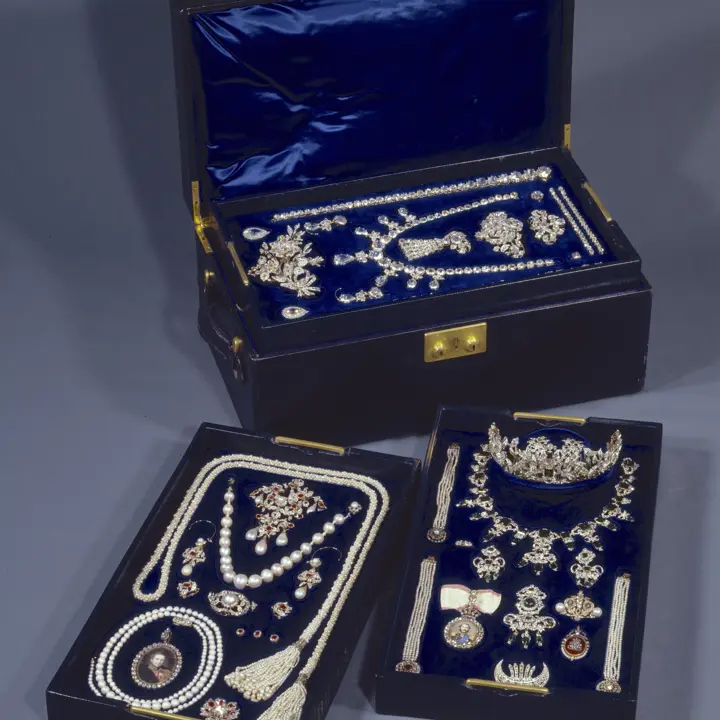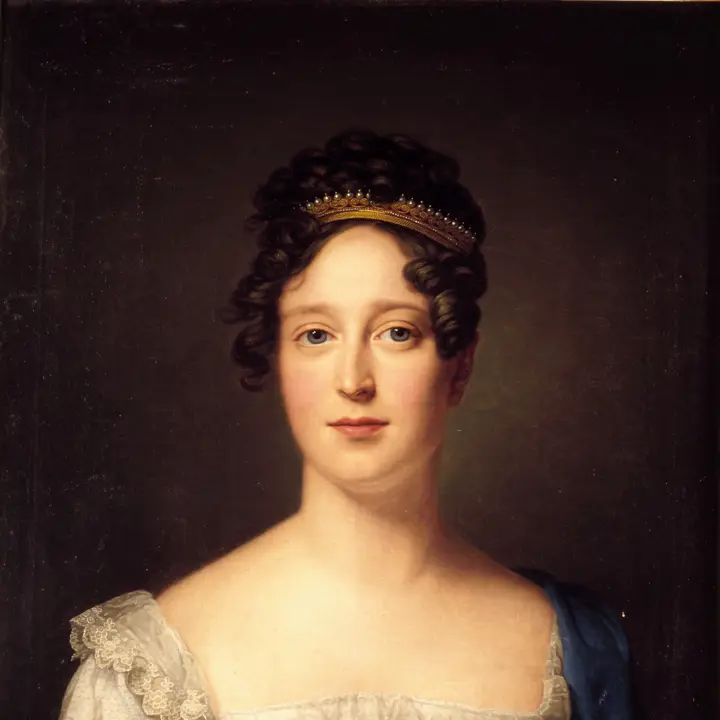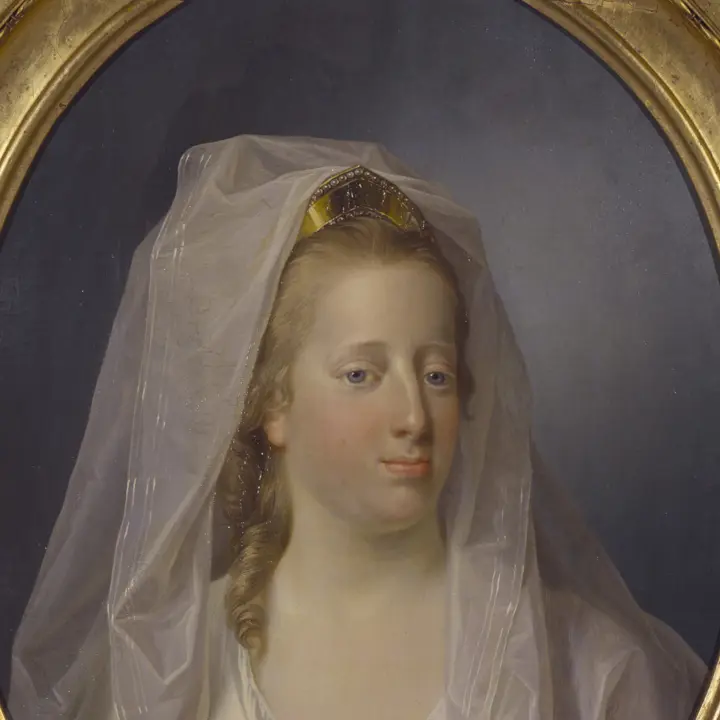From ring to hairpin
Many of the stones in the brilliant set came from the jewels that Queen Sophie Magdalene left to the Danish crown in her will in 1746. This includes the large drop-shaped diamond pendeloque at the centre of the necklace, which was originally part of Sophie Magdalene’s hairpin. The hairpin appears to have held special meaning for the Queen, as it was not just the most precious but also the first piece of jewellery to be listed in her will. Perhaps the Queen’s attachment to the hairpin was due to another large stone in the pin: a large brilliant-cut diamond that is now included in the string of brilliants in the necklace. Reportedly, this particular stone was originally set in a ring that Sophie Magdalene gave Crown Prince Christian (VI) at the couple’s wedding in Saxony in 1721.
From hairpin to ring
The large square brilliant in the middle of the necklace also belonged to Sophie Magdalene, who wore it in her hair or as a pendant on a necklace. In 1766, it was set in a ring that the newly married Christian VII gave to his English bride, Queen Caroline Mathilde, just 15 years of age and recently arrived from the British royal court. It is easy to imagine that the sheer size of the stone may have given her a sense of both the splendour and the gravity of the position that awaited her – a position she would later squander through her illicit affair with the court physician, Johann Friederich Struensee. In 1772, she was divorced from Christian VII and subsequently deported to Hannover. Her ring, with the large brilliant, was returned to the Danish crown. Two generations later, Caroline Amalie had the stone incorporated into the current brilliant set.
















